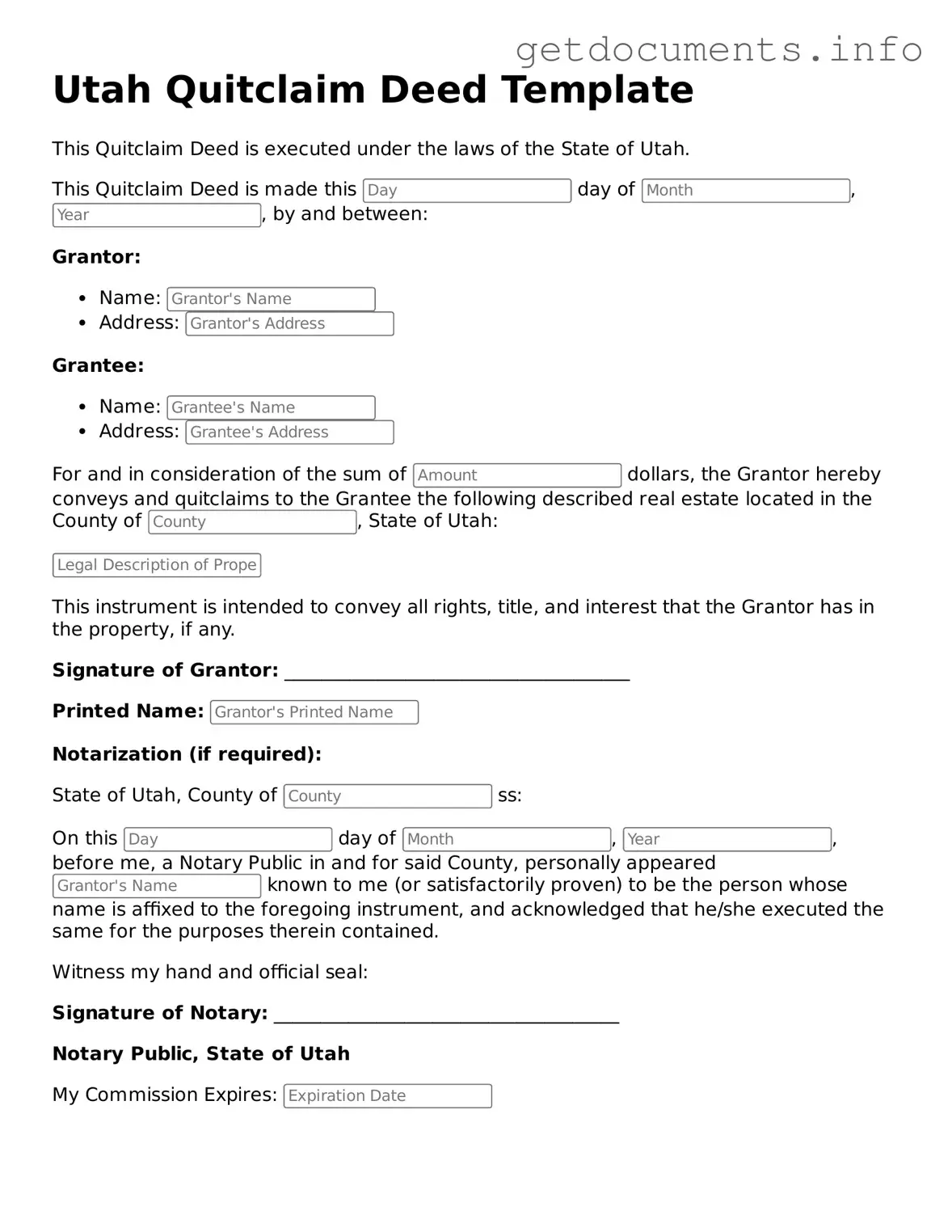The Utah Quitclaim Deed form is a vital document for individuals looking to transfer property rights without the complexities of a traditional sale. This form allows the granter to relinquish any claim they may have on a property to the grantee, making it a straightforward option for property transfers among family members, friends, or in situations involving divorce settlements. Unlike other deed types, a quitclaim deed does not guarantee that the granter holds clear title to the property, which means that the grantee receives whatever interest the granter has, if any. It is essential to ensure that the form is completed accurately, as errors can lead to disputes over property ownership. Additionally, the form must be notarized and recorded with the county recorder’s office to be legally effective. Understanding the implications of using a quitclaim deed is crucial for both parties involved, as it can affect future property rights and responsibilities. With the right information and guidance, the process can be efficient and beneficial for all involved.
